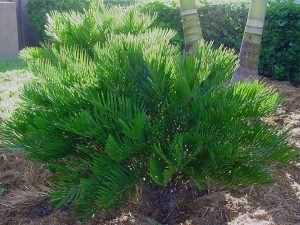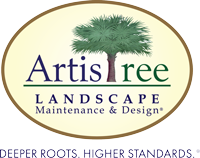Coontie Adds a Prehistoric Touch to Florida Landscape
We could start with how much sun this hardy cycad requires and where you should plant it, but let’s skip to the fascinating part about Indians, cyanide-like toxin and dinosaurs.
Meet the coontie plant. Well before Florida was “discovered” in 1513, the native Calusa and Timucuan people were using the roots of this then-abundant native plant to make flour. Writings from the sixteenth century detailed how they would remove the cyanide-like toxin from its roots by smashing and washing them before drying the substance. The practice was passed down to Seminoles who fortified themselves with the bread before battling U.S. soldiers in the Indian wars.

In the 1800s, European settlers learned of the technique from the Seminoles and built several mills on the Southeast coast of Florida to support the WWI effort. By the 1900s, coontie flour was known and sold as “Florida Arrowroot” But the harvesting and processing soon took its toll. Once commonly found in the wild by Florida’s native people, coontie is now listed as a Commercially Exploited Plant and cannot be collected from the wild without a permit. And to think this “living fossil” covered jungle floors in the dinosaur age!
Today, landscape designers use nursery-raised coontie plants in garden beds to create informal outdoor living areas. They can be used as a specimen, a foundation planting or mass planted as a groundcover. Its high drought and moderate salt tolerance make it a stellar choice for low-maintenance landscapes in Southwest Florida where its leaves will grow up to three feet long when planted in any sun condition. Well-drained soils are needed, and a small amount of organic material will enhance its growth.
Once your coonties are planted, you might get a nice little bonus. Their increased use is encouraging the presence of the rare Atala (coontie hairstreak) butterfly, which uses coontie as a larval host plant.
From jungle floors to battleground bread to butterflies, coonties will give you lots to look at and lots to talk about. Ask your professional landscape design firm where to best incorporate this prehistoric beauty into your Southwest Florida landscape. Better yet, contact ArtisTree at 941.488.8897 or via artistree.com.
Category Florida-friendly/Native Plants, Landscape Design, News, Plant selection
Tagged with: Landscape Design, Southwest Florida landscape, Coontie, Florida native plants


